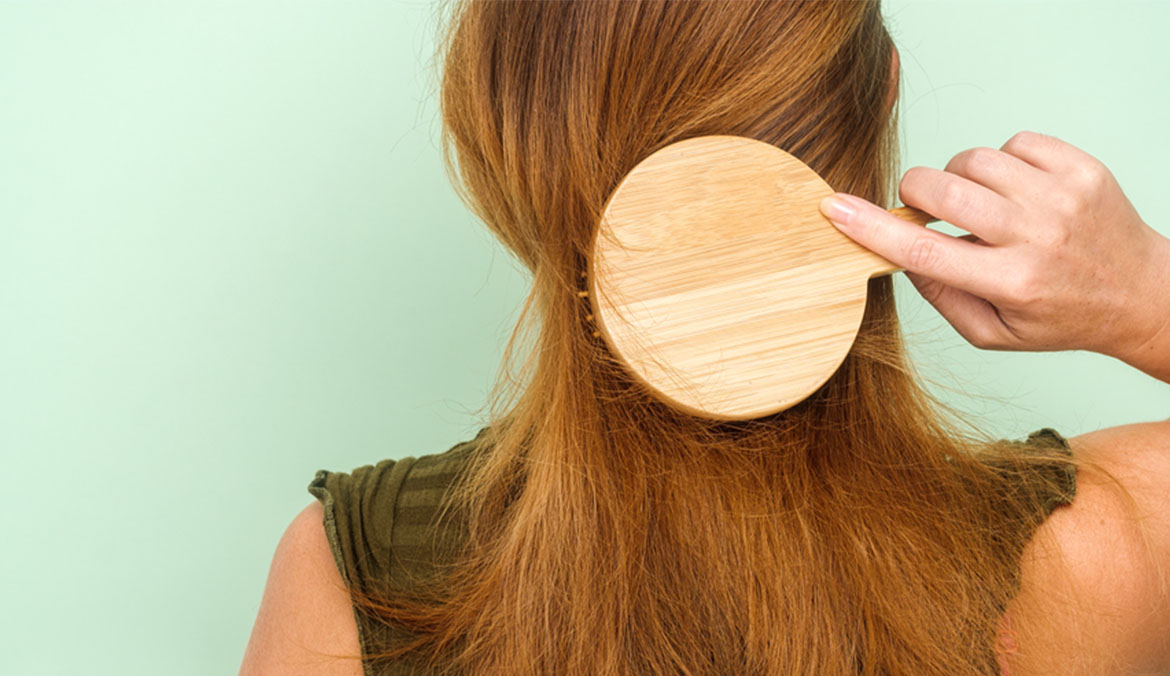[ad_1]
If you’ve ever casually Googled “hair loss products,” you’re likely familiar with Rogaine. The brand’s over-the-counter, Minoxidil-based hair-growth treatments have long been recommended by dermatologists, and years of happy customers confirm that they yield wonderful results—but only if they’re used correctly. According to board-certified hair restoration physician and plastic surgeon Michael Wolfeld, MD, there are a few common Rogaine mistakes that can hinder its efficacy.
“Hair growth and hair thickening is a long-term commitment,” says Dr. Wolfeld, who runs a practice on Manhattan’s Upper East Side. “Minoxidil is beneficial for genetic pattern hair loss, which is thinning hair.” And if used incorrectly or sparingly, “you’re not really not going to get the benefits from it.”
Below, Dr. Wolfeld shares the five Rogiane mistakes he sees patients make all the time and how to avoid them.
5 Rogaine mistakes you don’t want to make
1. Stopping too soon
“When you start using minoxidil, or any real hair loss medication, you may see an initial shedding of hair when you start using it,” says Dr. Wolfeld. “I tell patients that this is normal. Minoxidil does not cause hair loss, some of the thinner hair may be shedding, but when the hair grows in, it should grow back even thicker and fuller. So don’t be concerned or don’t be scared off. Just take a deep breath, calm down, and continue using it as directed. And you’ll get the ultimate benefits of it. But you may have to use it for nine months to a year to see the benefits from it.”
2. Using too weak of a solution
“Minoxidil is a product that’s FDA-approved for men and women. There’s a 5 percent solution that’s FDA approved for men ($48), and there’s a 5 percent foam ($48) and 2 percent solution approved for women,” says Dr. Wolfeld. “But in my practice, I generally recommend the women use the men’s 5 percent solution. It is more effective as long as it doesn’t irritate their scalp, if it does cause irritation to the scalp or any discomfort or dryness, then I would tell them to try using the foam instead. But if they can tolerate it, which most of them can, then I do think that the 5 percent men’s solution is going to be the most effective for men and for women.”
Dr. Wolfeld says there are different strengths designated for men and women because of outdated studies.
“A lot of the rules regarding Rogaine come from when the original studies were done on Rogaine and for women, they found that the 5 percent solution, the strength of it can be more irritating to the scalp,” he says. “Newer, more updated studies should be done, but that’s what the FDA-approval process is at this point.” Start with a lower-strength product and work your way up, and if you experience any irritation, press pause on using Rogaine and chat with your doctor.
3. Not using it regularly
Rogaine is meant to be used twice a day, but Dr. Wolfeld says he has a hard time getting patients to stick to that because of its texture. The solution is quite oily and the foam is sticky.
“Doing anything twice a day is difficult, especially a topical treatment on your scalp,” he says. “So I tell them that if they at least can do it once a day, that’s going to really help them. If they can do it twice a day, that’s even better. If they can do it twice a day, a few days a week, that’s good.” Because the foam is sticky, he says lots of patients use the solution at night and the foam in the morning as a styling product.
If you’re not using it daily, you won’t get the results you’re after.
“If you’re really intermittent, you’re not going to really see the benefits from it,” says Dr. Wolfeld. ” Let’s say you were very compliant with it for a few months and then you stop. Whatever benefit you’ve gained from using it, you’ll end up losing the benefit.” Translation: any new hair you grew will fall out. “So you really have to stay on it.”
4. Not massaging it in
“What’s important is that it gets into your scalp. So sometimes, when people use the solution or the foam, they just drop it on the top of their head and it’s just sitting on their hair and that’s not going to really give you the benefits of it,” says Dr. Wolfeld. “You really need to separate your hair and massage into your scalp so it really gets in there. And that’s where you’re going to get the effect. And then you’re going to have to wash your hands after you’re done.”
Learn more about managing hair loss:
Want to be the first to hear about the latest (and greatest) SHOP product drops, custom collections, discounts, and more? Sign up to have the intel delivered straight to your inbox.
Our editors independently select these products. Making a purchase through our links may earn Well+Good a commission.
[ad_2]
Source link

